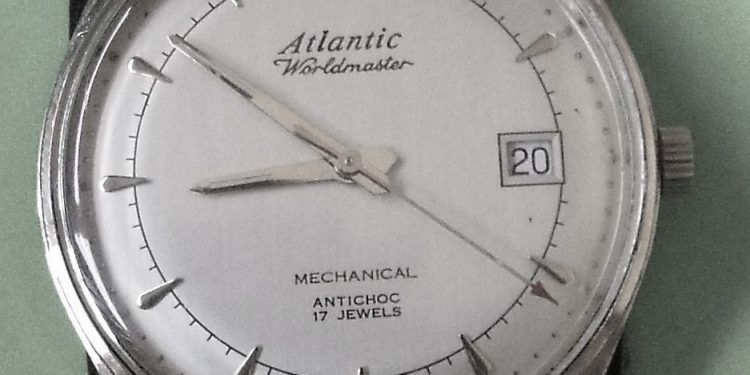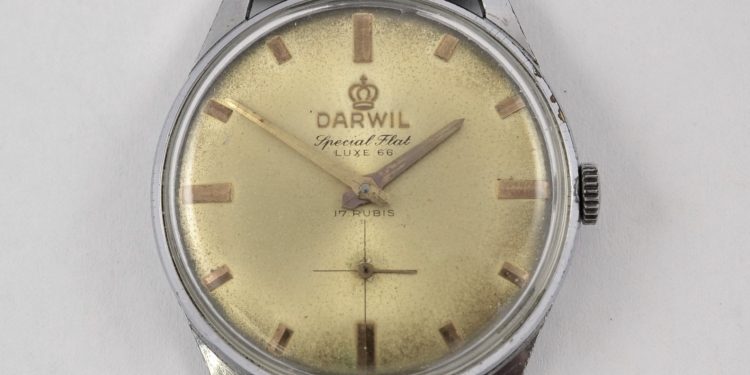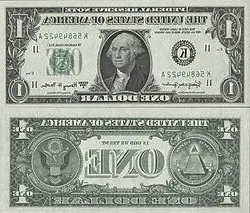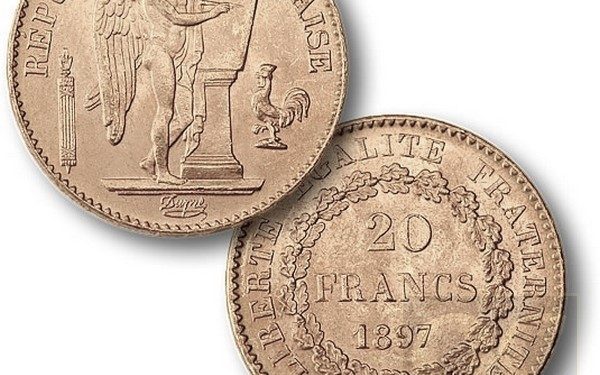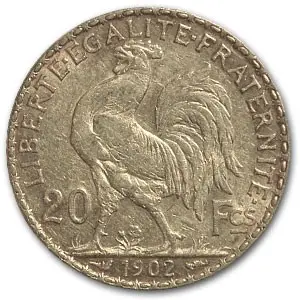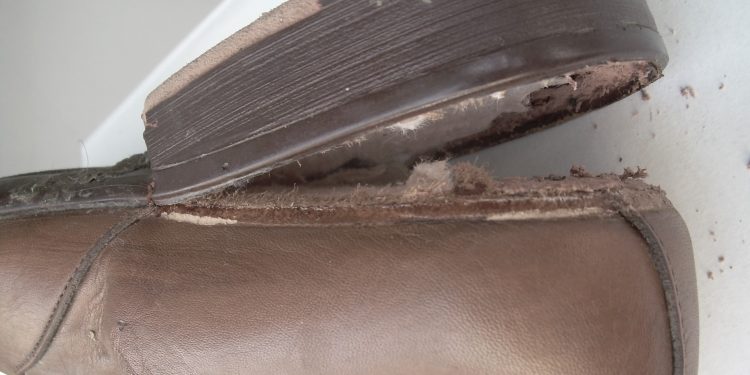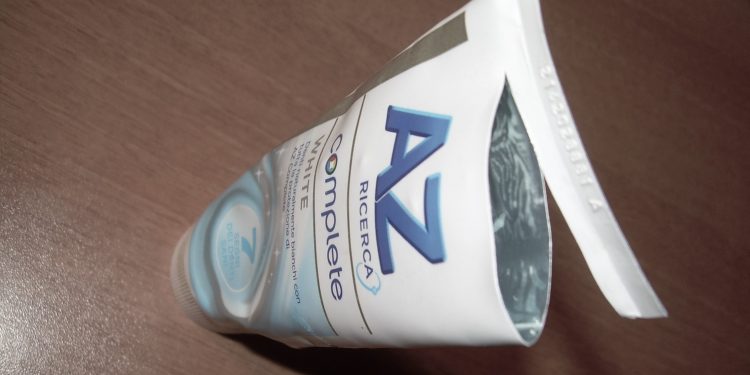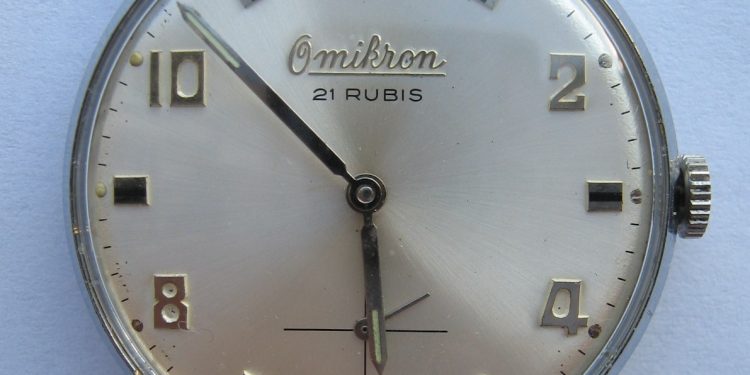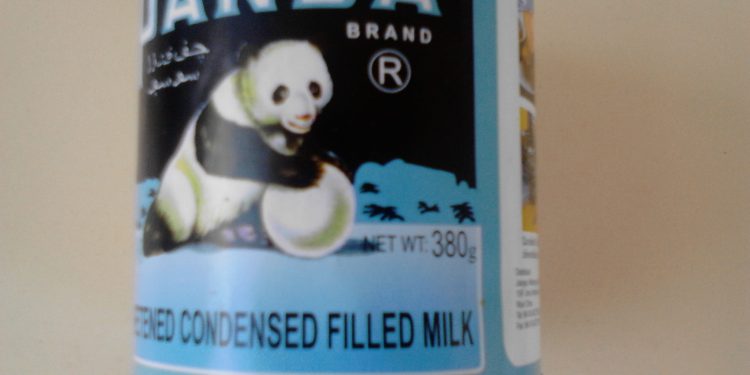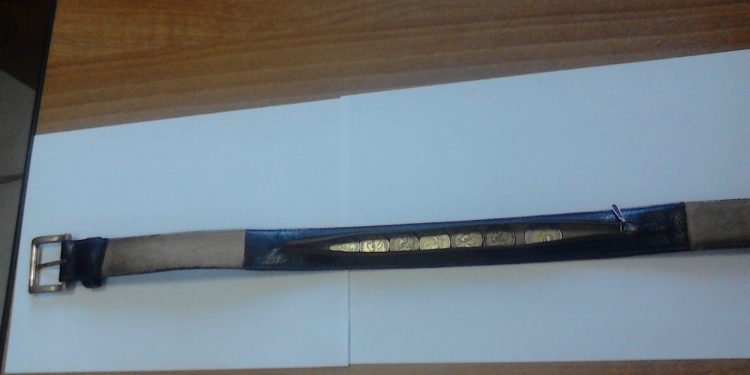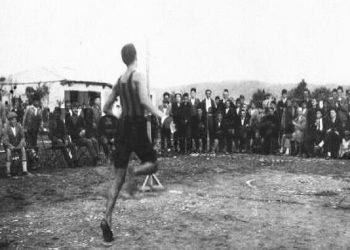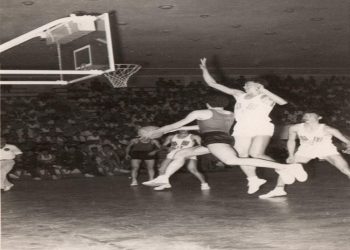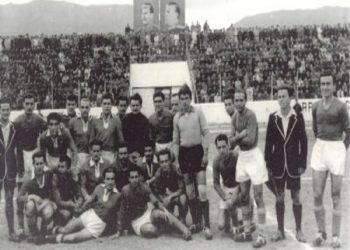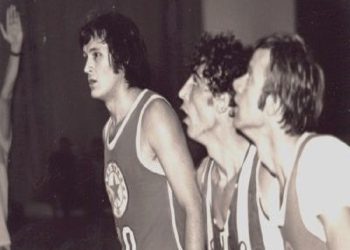From Uvil Zajmi
Memorie.al / What was “Gjeli”, how was he and the dollar hidden? From milk cartons “Milk”, “Panda”, canned fish, to shoe heels. From “Darvil” and “Atlantik” watches, tape recorders, etc., what was bought by athletes abroad. Moments of anxiety at customs crossings, stories and events untold, but lived and not forgotten throughout the period of communist Albania of Enver Hoxha and his successor, Ramiz Alia. In Albania, before and after the war, many gold coins circulated, as they were mainly used for trade, exchange, and were a means of living. There were several types of gold coins and after the war, many traders owned significant amounts of gold coins, but by decree of the People’s Assembly and by government decision, they were confiscated by the newly established communist regime.
Whoever did not hand it over or hide it, there were consequences, such as exile, imprisonment, etc. However, in the following years, there were many families who were able to keep some of the gold coins, and it is about small amounts, secretly using them as a means of livelihood. (The case of the well-known Italian doctor, Doctor Vincienco Lozzi, who tried to pass the gold coins, inserting them into the corpses of dead Italians in Albania, which he arranged for repatriation to their country, that after it was discovered, he was convicted by shooting). Precisely in these years, the Albanian Parliament issued a decree that no Albanian had the right to take foreign currency (a monetary value used in all countries, such as the dollar or gold coins) outside the borders. The consequences would be severe.
Those, who had the opportunity to go abroad as privileged from the population, were the athletes and artists. Until the late 1950s and 1960s, activities were normally carried out in countries where friendship was at the fore, and these were the countries of the Eastern communist camp, where even receiving and using currency there did not have preferences as in the West. Flintstones were some of what you could bring from these states. Everything changed after the 60s, when Albanian teams, the national team or clubs (mainly in football), began to participate in important European activities. Here we can say that it is the period when there are attempts or it starts sporadically, but being more intense year after year, the withdrawal of foreign currency by athletes.
The decree that prohibited the issuance of currency
Although it remained in force for a long time, at least until 1990, in the span of half a century, the exit of the gold coin outside the Albanian borders has not been absent, although in clandestine ways, many athletes and artists have been able to bring it out . But what were the ways, how was it acted, how was it hidden, the dollar or the famous “Rooster”? The athlete’s diet was only two dollars a day and the opportunity to buy something was almost minimal or impossible, all the more to please the relatives, who expected something as a gift.
First step, find and buy currency
Finding and buying the gold coin was a process that was carried out in secret and not everyone had the opportunity, because you had to know, no words would come out, be very sure of the prohibited action, considered smuggling for the time and finish in prison). Those who owned gold coins were, of course, former merchants or their family members, who may have had some left over from the first post-war years. Even those who had family members abroad and sent them dollars, the state did not give them, converting them to the Albanian ALL (1 dollar was 70 ALL, for economic immigrants from the Zogu Monarchy period, while for political refugees, 1 dollar was given at 20 old ALL, with which you can buy half a wheat loaf). There was also a black market in gold, which operated quietly. Two were the important monetary values: the dollar bill and the gold coin (‘Napoleon’, in everyday language).
The gold “Napoleon” was a coin with a rooster in the middle. It was precisely this symbol that the 20-franc coin, became famous with the very popular name “Rooster”, which was converted into 68 thousand ALL (old) in the Albanian bank. (For 68,000 ALL, you can buy a Czech or Romanian washing machine that was imported at that time from the Albanian state and a television of the brand “Iliria”, “Adriatik”, or “Lura”, together with a stabilizer, produced by the Radio-Television Factory in Durres). So “Gjeli” represented the gold coin that the athletes took and used when they went out to buy different things. There was also a coin, such as the “Turkish lira, five”, which had a greater value, but was of a size that was not preferred at the exit. The “rooster” was almost like the 100-lek, today’s metal, in terms of size, which you could maneuver to hide it.
Unlike dollar bills, receiving and hiding the gold “Rooster” was dangerous in customs control. A “Gjel” was bought approximately from 2000 to 3000 ALL, (old), which for the time, was half a monthly salary, while the exchange abroad depended on the place where you used it. Then, its value (“Rooster”) increased, up to two or three watches of the Swiss brand “Darvil”, or “Atlantik”, which you bring mainly, the drivers of the Foreign Trade Export Park with the vehicles of big with trailers, where “ALBANIA” was written. The “rooster” was resistant, as it was inserted everywhere and protected from damage. Even the dollar was in high demand and usable. As a banknote, it was easier to hide, but it was delicate, that it should not get wet, it should not be spoiled, and it should be kept in good condition.
Customs clearance from Border Checkpoints and Rinas airport
Exiting the country and returning was in three customs directions: by plane from Rinas, by ship from the Port of Durrës and by bus, from the Land Border Crossing-Control points. In all three cases, there was fine control and fear forced athletes or artists to keep everything a secret, not a word or information even with their closest friend, at least on the way out. (Among athletes, or artists who were given the opportunity to go abroad, there was great solidarity in silence, regarding this fact). The team or groups of artists, (such as the State Ensemble of Folk Songs and Dances, or district ensembles) etc., were accompanied in all cases by a person from the State Security, who was responsible and supervised everything, as soon as it started, during the stay and on the way back. After each trip, he reported in writing, in detail, what he had seen and ascertained, for each individual.
After receiving the currency, crossing, exchange and consumption, another difficulty to overcome was coming to the customs office and giving an account, justifying with what money you bought what you received, where you found the amount of money, because the diet they gave you was very minimal for every athlete, artist and group leader. An athlete “lost weight” more when passing through customs than during the 90 minutes of the match when he played. It was a very tiring and dangerous ordeal. A change in facial expression, an uncertainty in the answer, or actions with different gesticulations, created doubts in the customs officer. A piece of information, a targeted check, endangered everyone, especially the person who, if caught, had consequences, up to imprisonment.
Forms of concealment
Regarding the way of hiding the dollar bills or “Gjelit”, gold, initially everything was spontaneous, circumstantial and the fantasy of the individual who dared to take them on the roads and exits abroad. Such remain for a long time, even though the customs posts had information about the ways of extracting currency from athletes or artists. When there was a customs clearance at the Rinas airport, there were other methods, which differed when the crossing was by land, by bus, rarely by train or ship. When the trip was by plane, hiding the currency was mainly done in toothpastes, manufactured by NISH-KIMIKE (“State Chemical Industrial Enterprise” – Tirana. It was opened from the bottom, the coin was inserted inside, and closed again, in the department where it was produced she.
Even in canned fish, mainly sardines, which were produced in the Canning Factory “Ernest Telman” in Vlora, the introduction of currency was done during production, where of course they had to compromise someone who worked there, of course, since you had to pay him. As for the canned milk “Milk” or “Panda”, produced by the “Ali Kelmendi” Food Factory in Tirana, it was taken, carefully opened vertically and, after inserting the coins, closed with tin welding, wrapping it again with the label it’s made of paper. (One of those athletes who have practiced this method several times is Ajet Toska, the legend of Albanian athletics in the hammer throw competition, who testified to this in the show “Rrëfim”, on TV SCAN). But even the soles or heels of civilian shoes was another efficient way. The heel was removed, the coin was placed in the heel, and it was reunited with the shoe I normally walk in. Another place of placement was the straps or bottom of sports bags (base). Then, inside the pie, or the tie (a very modern tool, for inserting the dollar, coin, or any watch). But also the belt of the pants…!
Pants belt
It is unique, unprecedented and very rare, the one that was used by a famous ex-footballer, (L.B.) for over 20 years at land and air border crossings, without being detected by anyone. The athlete himself made the “magic” leather belt public only in recent years and keeps it as a rare relic. Made exactly for this, by American makers (the belt is still in good condition today), it was owned by an American friend of the family who came as a visitor in the 60s. On his way out, the athlete, who had noticed him by chance, asked him as a souvenir. Caught “by surprise”, the American friend initially hesitated, but then he gave it to him. With chain about 20 cm. in the back of it, it is made in such a way that you can insert about 20 “Gjela”, or dollars, made in the shape of a cow. Even if the strap is removed from the body, it is difficult to notice or ascertain that, at the back, such a sophisticated mechanism works.
Sports competition shooters and rifles
That of putting it in the shooting sports weapons has been one of the ways of hiding and taking out the gold coin from the side of the shooting sportsmen. The rear part of the rifle barrel was used, right in the channel where the cleaning tools were inserted, or of the metal body holder. The holes were of ample diameter, about the size of coins or dollars. Another safe place was the binoculars used for competition. It was disassembled before departure; a coin was inserted and assembled again. All sporting equipment of competition shooters, such as rifles, binoculars, etc., were placed in a safe place on the bus or plane and no one checked. If it was passed to land customs, the forms were different. Of course, they did not hesitate to apply to those crossing from the Rinas airport, but in these cases, i.e. from the customs of the Border Crossing Control Points, it was easier, since the currency and dollars were hidden in the metal parts of the bus, such as seat (after the skin was torn, it was inserted there), on the carpet of the bus (in such cases, even when it was discovered, no one came out as a god), etc.
What was bought by the athletes?
The exchange of a currency in Western countries reached values from 70 to 100 dollars. For the time, it was practical and economical to buy wristwatches. The brands “Darvil”, “Atlantik”, “Omikron”, “Raketa”, etc. were liked. One such one was sold from 10 to 12 thousand ALL (old), in Albania. At that time, wristwatches were in high demand, as they served massively as a sign of engagement, among young couples). At least until the 80s, because later, electronic items came to the fore. With the money you could get by selling a few watches in Albania (a process also in secret), someone ensured marriage, or a slightly better life. Until the end of the 70s, there was no question of getting televisions, tape recorders, or other voluminous and expensive items.
Return anxiety
Accountability and the justification that had to be prepared for what you had bought abroad was another concern, uncertainty, but also luck for athletes, artists and those few others who were given the opportunity to serve abroad. The customs officer was also very important, tolerant or not. With two diet dollars a day, you can buy nothing but soaps and chewing gum. Everything was unjustified, if you took more. The control was strict; you had to declare what you had received. To change clothes, someone wore two pairs of pants, or blouses and shirts on the body; someone gave something of his to a colleague, distributing the purchased goods. The clothes bought abroad, to avoid provocative questions, were destroyed and thrown into the bag, as if they were used. If you were on the bus, someone used the balls that the team had available, ripping them open a little, to insert purchased watches etc.
Often times, the friendship with the fans of the Kosovar well-wishers was also used, using as an argument the justification that everything bought was supposedly a gift from them. But, in many cases, the athletes have left them at customs, as they did not allow them to receive them, because, based on the laws of that time, any gift that could be given abroad, must be delivered to that institution. Sports club, or company that had sent with service abroad. And no one could complain or claim to get them back.
However, this was a signal for the individual to be careful. Exceptions were made by female athletes: both on the way out and on the way back. Being a girl prevented her from having the courage or courage of a boy, and the most she could do was to put a “Rooster” around her neck as a pendant, or on her recipe belt. Then the international activities for girls were almost minimal. Only after the 1980s did sportswomen become “professionals” in passing prohibited monetary values across the border. This process already included not only boys, but also girl’s athletes.
How was the teammate “cheated”?!
The inclusion in the dance of the companion, who was mainly an employee of the State Security and a politically guaranteed person, was important and also served as a form of protection, for the return. It was a well-thought-out strategy and successfully practiced by some athletes and artists, who were given the opportunity to go abroad for various matches and activities. The case happened in West Germany, in 1981, in the FRY-Albania match, 8-0 in the city of Dortmund. Here’s what one of the players of the national team, who prefers to remain anonymous, tells about this: “The exit of currency outside Albania continued to be completely prohibited. It was the time of tape recorders, a favorite and a luxury in Albania that few had. Since we had been able to pass ‘Gjelat’, we became interested in buying tape recorders.
And so we found the store where they were sold, they cost 500 dollars apiece. A Kosovar friend who lived in Dortmund, talked to the seller and asked him to do us a favor (he understood that we were football players). We asked him that the second time we went to his store, he said that the wholesale tape recorders cost $10 apiece. Then we returned to the hotel, invited the team’s companion (a State Security employee) for a walk, and as if by chance, we went to the store where we had made the compromise. The seller, already prepared for our question, told us that; in bulk; there were discounts up to $10 pieces.
We all acted dumbfounded, were surprised and asked them to buy 7 of them. Even the companion was willing to buy one for him, but we told him that he had it as a gift from us. After we got the tape recorders, we secretly paid the seller the amount we owed him. What was important was the return and presentation at customs of the tape recorders. And in fact, her employees were surprised and objected to the purchase at the price that we declared, but it was the attendant who guaranteed, swearing that he had also bought it at that price, together with us, because he had been present him. His word was a guarantee; it was not discussed, so together with his, our tape recorders also passed”.
The case of “Flamurtari” after returning from Belgrade
It was one of the high points of the sports results achieved by an Albanian team in the UEFA Cup: exactly in Belgrade, the famous “Flamurtari” of Vlora, eliminates “Partizan” of Belgrade, after a historic and unforgettable goal by Sokol Kushta. Before leaving for Belgrade, as is rare, the Party Committee of the Vlora district, in a meeting with the team, promises the players that it will give each of them a color television if they make a dignified presentation in the return match. (This, perhaps, because no one had thought of the qualification). The team, covered in glory, returns home after that result. To Podgorica, he comes by plane, then by bus to Han i Hoti, where he would cross the land customs border. Along the way, many Kosovar, Montenegrin Albanian, etc. fans accompany the team in their traditional “kerrat” (cars) and as the bus stops in the center of the city, they approach and meet the football players and who more and who less a few, as far as they can, help them with money to buy televisions and tape recorders in a nearby market.
It was the year 1987. It was thought that there would be some tolerance, or some lack of control, for the football players and leaders of the “Flamurtari” Sports Club, after that historic result. But the opposite happened. It was not at all a formal control as thought, and it would be like never before, very tough. The footballers were shocked. After the verification, by order, the tape recorders and televisions were kept at the customs and without any explanation, they were not returned to anyone. Although in Shkodër they were received with great enthusiasm by friendly fans, the despair of the footballers was really great.
Even when they returned to Vlora, the promised color televisions were forgotten and not even remembered. After a month, the team played in Gjirokastër against “Warrior”, for the national championship. The footballers were released at noon on Saturday (the match was played on Sunday), so they went to Qafa e Pazari to pass the time. One of them, a well-known football player, tells the story: “Together with a colleague of mine, while walking quite by chance, we stopped at a currency shop (they had just been allowed by the state for the purpose of collecting currency).
There were several tape recorders in the store window, but what caught my attention was a small, black and white, 12-pole Tesla television set, priced at $400. I recognized it immediately; it was exactly the one I had bought for $100 in Montenegro. Stunned, both of us were looking at each other. We couldn’t believe our eyes that the very televisions and tape recorders that were stopped at the customs of Hani Hoti, a short time ago, were on sale for our “Flamurtari” team. We went back and told our teammates what we had seen. Immediately the questions started, whether we had seen their goods in that store. Even today I remember this moment. I think of the banned but not forgotten ‘Tesla’ TV, as well as the color one, proposed and denied. In both cases, I was a failure”, – concludes the conversation, the famous ex-footballer.
“Forbidden trade of athletes”
For athletes who have been able to go abroad for activities, this “trade” has been a secret companion of their career (of course, not for everyone). Along with the preparations for the match, who more and who less also thought about this “trade”, about the “Rooster” and the dollar, a double necessity: As much as you could benefit, as much as you could risk, even if it was discovered, it had serious consequences. And there were not a few who suffered it for a “Rooster”, a dollar or a “Darvil” watch, found in their bag. Sad stories that seem absurd when you judge them today. But for those who lived the time and events, these details always remain in their memory.
Many generations of athletes have played and fought with the world, of course for a sports result, but also to buy a television, a tape recorder, a watch, a radio or, for a piece of clothing, which were not allowed and prohibited buy them. However, the mechanism of currency sneaking out has not been curbed. Even though at the customs crossings, it was known that athletes or artists were the
protagonists of taking it abroad, even though all forms and ways were used to discover it, they could not prevent it. The “magic” belt of the pants is one of the most authentic witnesses of the “forbidden trade and smuggling” of Albanian athletes and artists, throughout the period of the communist regime. Memorie.al




